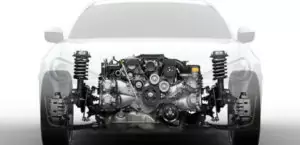The 1.5-liter Mazda ZY-VE engine was produced at a plant in Japan from 2002 to 2015 and was installed on the company’s most popular models with indexes 2 and 3, as well as Verisa. There was a modification of this motor without an inlet phase regulator called ZY-DE.
The Z-engine family also includes:
The engine was installed on:
- Mazda 2 DY in 2002 – 2007;
- Mazda 2 DE in 2007 – 2015;
- Mazda Demio DY in 2002 – 2007;
- Mazda Demio DE in 2007 – 2015;
- Mazda 3 BK in 2003 – 2009;
- Mazda 3 BL in 2009 – 2013;
- Mazda Axela BK in 2003 – 2009;
- Mazda Axela BL in 2009 – 2013;
- Mazda Verisa DC in 2004 – 2015.
Specifications
| Production years | 2002-2015 |
| Displacement, cc | 1489 |
| Fuel system | distributed injection |
| Power output, hp | 100 – 115 |
| Torque output, Nm | 135 – 140 |
| Cylinder block | aluminum R4 |
| Block head | aluminum 16v |
| Cylinder bore, mm | 78 |
| Piston stroke, mm | 78.4 |
| Compression ratio | 10 |
| Features | DOHC |
| Hydraulic lifters | no |
| Timing drive | chain |
| Phase regulator | S-VT, intake |
| Turbocharging | no |
| Recommended engine oil | 5W-30 |
| Engine oil capacity, liter | 3.9 |
| Fuel type | petrol |
| Euro standards | EURO 4/5 |
| Fuel consumption, L/100 km (for Mazda 2 2012) — city — highway — combined |
7.6 4.7 5.7 |
| Engine lifespan, km | ~280 000 |
| Weight, kg | 117.9 |
Disadvantages of the Mazda ZY-VE engine
- The main problem of the unit is the tendency to accelerated carbon formation.
- Without regular decarbonization, the engine will begin to noticeably lose power already by 100,000 km.
- Throttle and EGR pollution is also the main cause of floating speeds.
- The timing chain has a good resource, but the replacement is expensive.
- Valve clearance adjustment is carried out every 100,000 km, there are no hydraulic lifters.






